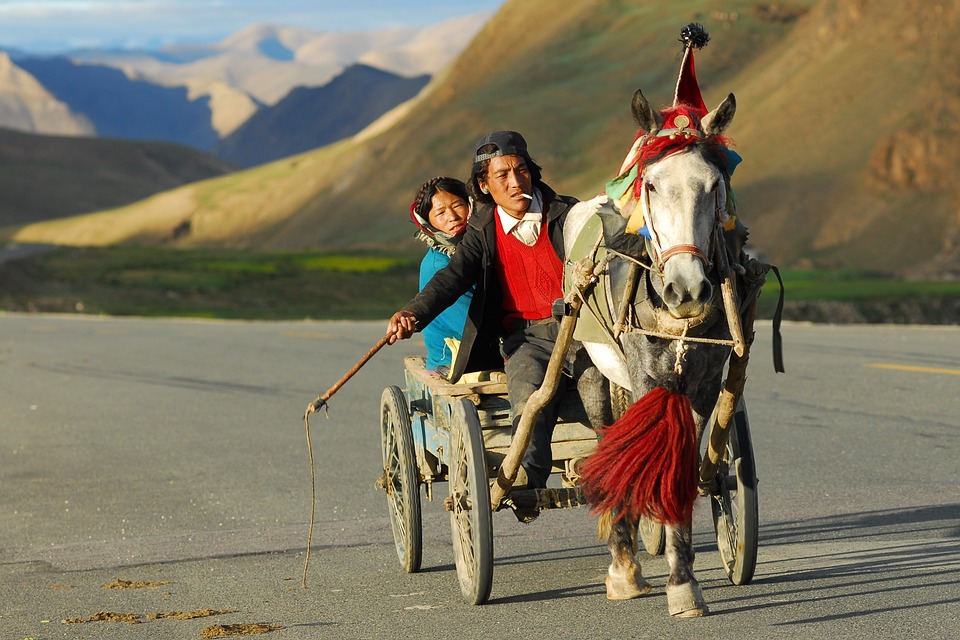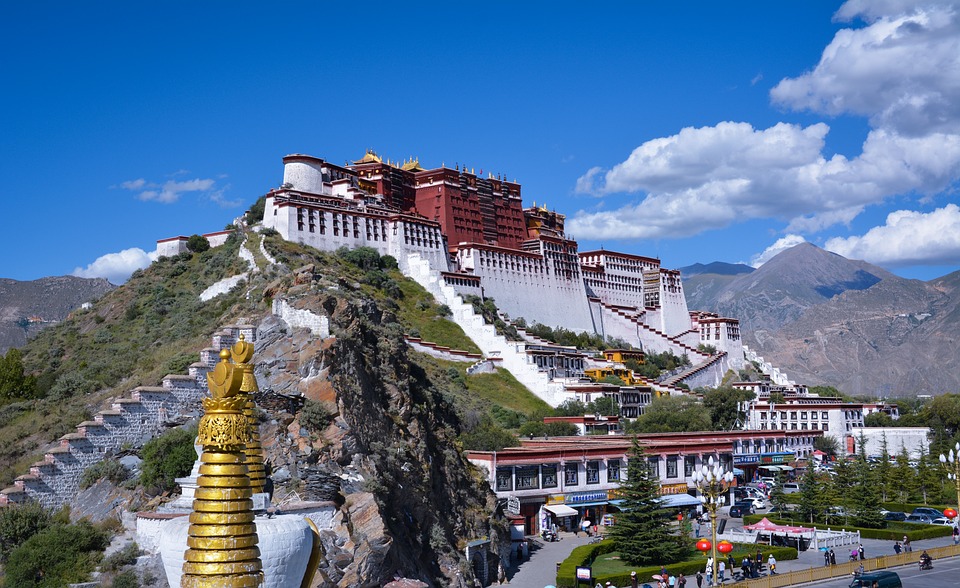Tibet Travel Guide
Tibet, known as the "Roof of the World," is a remote and mysterious land located in the western part of China. It is a unique destination that attracts many visitors with its rich culture, stunning natural scenery, and spiritual significance. From the iconic Potala Palace to the beautiful Namtso Lake, there is something for everyone in Tibet. Tibet has a long and fascinating history, and its unique traditions and customs have been preserved for centuries. A trip to Tibet is sure to be a memorable and rewarding experience. While there are some challenges and precautions to be aware of. In this article, we will explore some of the highlights of Tibet, as well as provide useful information for travelers planning a trip to this beautiful region.

Local Tibetan
Location and Geography
Tibet is a region located in the western part of China, covering an area of approximately 1.2 million square kilometers. It is bordered by the Himalayas mountain range to the south, the Karakoram mountain range to the west, and the Kunlun mountain range to the north.
Tibet is often referred to as the "Roof of the World" due to its high altitude. The average elevation of the region is around 4,500 meters above sea level, with some areas reaching over 8,000 meters. The highest peak in the world, Mount Everest, is located on the border between Tibet and Nepal. The major rivers in Tibet include the Brahmaputra, the Indus, and the Yangtze. These rivers are fed by glacial meltwater from the Himalayas and provide water for millions of people in the surrounding regions.
The natural vegetation in Tibet includes alpine grasslands, desert shrubs, and high-altitude forests. The region is home to a variety of wildlife, including the Tibetan antelope, the wild yak, and the snow leopard.
Climate and Weather
Tibet has a unique climate due to its high altitude and location. The region is largely arid and characterized by a cold, dry climate, with large temperature variations between day and night. The summers are short and cool, while the winters are long and very cold. The weather is cold and dry for most of the year, with temperatures dropping below freezing in the winter months.
Spring (March - May): Spring in Tibet is short but beautiful. The weather is relatively mild, and the snow starts melting, giving way to lush greenery and blooming flowers. However, it can still be quite cold at night, and snowfall is not uncommon in some areas.
Summer (June - August): Summer is the warmest season in Tibet, with temperatures ranging from 15°C to 25°C. The weather is generally dry and sunny, with clear blue skies. This is the peak tourist season in Tibet, with many people visiting to take advantage of the mild weather and clear views of the mountains.
Autumn (September - November): Autumn is another popular season to visit Tibet. The weather is cool and dry, with clear skies and stunning views of the changing colors of the foliage. Temperatures begin to drop in October, and by November, snow starts falling again in some areas.
Winter (December - February): Winter in Tibet is cold and harsh, with temperatures dropping well below freezing at night. Many areas become inaccessible due to heavy snowfall, and travel is difficult. However, this is also a great time to visit if you enjoy winter sports like skiing and snowboarding.
The best time to visit Tibet is from May to October, as the weather is milder and more pleasant during these months. If you want to enjoy mild weather and outdoor activities, spring and autumn are good choices. If you want to avoid the crowds and don't mind the cold, winter is a good option. But if you want to experience Tibet at its warmest and sunniest, summer is the best time to go. However, visitors should be prepared for sudden changes in weather and temperature, as well as the possibility of altitude sickness.
Transportation
Getting to Tibet
Tibet can be accessed by air, train, or road. The most convenient way to get to Tibet is by taking a flight to Lhasa Gonggar Airport, which has connections to major cities in China such as Beijing, Chengdu, and Shanghai, as well as international destinations such as Kathmandu in Nepal. Another option is to take the world-famous Qinghai-Tibet Railway, which connects Lhasa to several major cities in China, including Beijing, Xining, and Chengdu. Road travel is also possible, but it is a more challenging and time-consuming option, as the roads can be rough and the distances are long.
Getting around Tibet
The most common way to get around Tibet is by taking a private car or a tour bus. The roads in Tibet can be challenging, and it is best to hire an experienced driver who knows the area well. Another option is to take a motorcycle or a bicycle, but this is only recommended for experienced riders who are comfortable with the high altitudes and rough terrain. For short distances within cities, taxis and buses are available. It is important to note that travel in Tibet is heavily regulated, and visitors must have a permit to enter certain areas. These permits can be obtained through a travel agency or with the help of a local guide. It is also advisable to acclimate to the high altitude gradually, as altitude sickness can be a significant problem for visitors who are not used to it.
Accommodation
Accommodation options in Tibet range from basic guesthouses to luxury hotels, depending on your budget and preferences. In larger cities such as Lhasa and Shigatse, there are many options available, including international chain hotels. In more remote areas, visitors may need to stay in simple guesthouses or tents. It is important to book your accommodation in advance, especially during peak travel season, as availability can be limited.
Attractions and Highlights
Tibet is a land of breathtaking natural beauty and rich cultural heritage, with many attractions and highlights for visitors to explore. Here are some of the top things to see and experience in Tibet, as well as some recommended places to visit:
Visit Lhasa: Lhasa is the capital city of Tibet and the cultural and religious heart of the region. Here you can visit the famous Potala Palace which is one of the most iconic landmarks in Tibet and is a must-visit for any traveler. The palace was once the residence of the Dalai Lama and is now a UNESCO World Heritage Site. Also don’t miss out the Barkhor Street, which is lined with shops selling traditional Tibetan crafts.
Explore Tibet's monasteries: Tibet is home to many ancient and beautiful monasteries, including the most famous Jokhang Temple which is the holiest site in Tibet and is an important pilgrimage destination for Tibetan Buddhists. The temple is located in the heart of Lhasa and is known for its stunning architecture and rich history. Other recommended monasteries are Drepung Monastery, Sera Monastery, and the Ganden Monastery. These monasteries offer a glimpse into Tibet's rich Buddhist heritage and are also stunning architectural marvels.
Trek through Tibet's mountains: Tibet is home to some of the world's highest mountains, including Mount Everest, Cho Oyu, and Shishapangma. Mount Everest, the highest peak in the world, is located on the border of Tibet and Nepal and is a popular destination for adventure travelers. Visitors can trek to the base camp of Everest and enjoy stunning views of the mountain and surrounding landscape. Trekking through these mountains offers breathtaking views and an opportunity to experience the region's rugged natural beauty up close.
Attend a Tibetan festival: Tibet is famous for its colorful festivals, which are celebrated throughout the year. Some of the most popular festivals include the Tibetan New Year, the Shoton Festival, and the Saga Dawa Festival. These festivals offer an opportunity to experience traditional Tibetan culture and customs.
Visit Lake Namtso: Lake Namtso is one of Tibet's most beautiful natural wonders, and is a popular destination for nature lovers. The lake is located at an altitude of over 4,700 meters and is known for its crystal-clear waters and stunning scenery. It is surrounded by snow-capped mountains and is home to a variety of wildlife, including migratory birds and wild yaks.
Explore the Yarlung Valley: The Yarlung Valley is known as the cradle of Tibetan civilization and is home to many historic sites, including the Yumbulagang Palace, the first palace in Tibet.
Visit Mount Kailash: Mount Kailash is a sacred mountain in Tibet and is considered one of the holiest places in Buddhism, Hinduism, and Jainism. It is also a popular destination for trekking and pilgrimage.
These are just a few of the many things to see and experience in Tibet. Other recommended places to visit include the Yamdrok Lake, the Tashilhunpo Monastery, and the Rongbuk Monastery.
Tibet is also known for its rich cultural and religious heritage. Buddhism is the predominant religion in the region, and many of the most important Tibetan monasteries and temples are located in Tibet. The Tibetan people have a unique culture and language, which has been heavily influenced by Buddhism and the region's harsh environment.
Tibetan Culture
Festivals
Tibet is known for its vibrant and colorful festivals, which are celebrated throughout the year. Some of the most popular festivals include the Tibetan New Year (Losar), the Shoton Festival, and the Saga Dawa Festival. These festivals offer visitors a unique opportunity to experience Tibetan culture and traditions, with colorful parades, traditional dances, and delicious food.
Tibetan Cuisine
Tibetan cuisine is unique and flavorful, with influences from Indian, Chinese, and Nepalese cuisine. Some popular dishes include momos (steamed dumplings filled with meat or vegetables), tsampa (roasted barley flour), and yak meat dishes. Visitors can also enjoy butter tea, a traditional Tibetan drink made from tea leaves, butter, and salt.
Tibetan Buddhism
Tibetan Buddhism is a central aspect of Tibetan culture and has had a significant impact on the region's art, music, and literature. Visitors can explore the many Buddhist monasteries and temples in Tibet, which are known for their intricate artwork and stunning architecture.
Tibetan Arts and Crafts
Tibet is known for its traditional arts and crafts, including thangka painting, woodcarving, and embroidery. Visitors can explore the many markets and shops in Tibet to purchase unique and beautiful souvenirs.
Challenges and Precautions
While Tibet is a unique and fascinating destination, there are some challenges and precautions that visitors should be aware of. One of the main challenges is altitude sickness, which can affect travelers who are not accustomed to high altitudes. Visitors should take it easy for the first few days and drink plenty of water to avoid dehydration. It is also important to pack warm clothing, as temperatures can drop rapidly at night.
Visitors to Tibet should also follow all local laws and regulations and to respect local customs and traditions.

Explore Tibet with Us
Experience the breathtaking natural beauty and rich cultural heritage of Tibet with our Tibet Tours. Our tours offer an opportunity to explore Tibet's stunning landscapes, from towering mountain peaks to tranquil lakes and lush valleys, as well as its ancient monasteries and historic sites. Our experienced guides will take you on an unforgettable journey through Tibet's fascinating history and culture, introducing you to the region's unique traditions and customs. Whether you want to trek through the mountains, attend a colorful festival, or simply soak up the beauty and tranquility of this magical land, our Tibet Tours have something for everyone. With our expert planning and personalized service, we will ensure that your trip to Tibet is a truly unforgettable experience. Book your Tibet Tour with us today and discover the wonders of this extraordinary destination.
Start Now